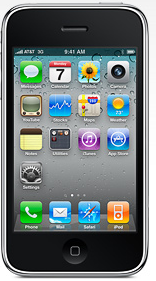A working class Apple iPhone would disrupt Android, RIM, Nokia

Apple may be plotting a low-cost iPhone---most likely the 3GS---in a move to tackle emerging markets, prepaid plans and midmarket customers. If this working class iPhone hits the market it will be disruptive to Android as well as Research in Motion, which is living off its low-cost Curve.

Misek makes the case for a low-cost iPhone in simple terms:
We believe AAPL could enter the smartphone mid-market with a $300 iPhone with margins around the current corporate average. Our checks increasingly point to a launch within the next 6-18 months. We believe that this will increase Apple's total addressable market by an additional 500 million phones per year.
Misek's assumptions revolve around a $300 price tag unsubsidized for this low-cost iPhone with $180 in cost of goods sold. That spread equates to $1 earnings per share for every 10 million phones sold. For reference the iPhone 4 on Verizon Wireless has a retail price of $649.
In many respects, we've already seen what a cheap iPhone can do. When Verizon Wireless got the iPhone 4, AT&T was able to still keep units humming with the iPhone 3GS at $49.99. That low-cost iPhone allowed AT&T to take Verizon's best punch well.
Misek noted that Apple can convince manufacturers to shave costs for the iPhone 3GS and make it up on volume. Add it up and the iPhone 3GS can still hang with prepaid phones even if the device can't plug into Apple's upcoming cloud services.
Rest assured that a working class iPhone could be a huge hit with some significant fallout. To wit:
- Android phones are increasingly going down market. Nokia CEO Stephen Elop noted Android's pricing was killing its margins.
- Nokia is already having trouble moving feature phones ahead of that Windows Phone 7 device launch. How will Nokia fare with Apple and Android squeezing margins?
- Research in Motion has largely lived off Curve volume---especially in emerging markets. Apple will be a big headache if it moves down market.